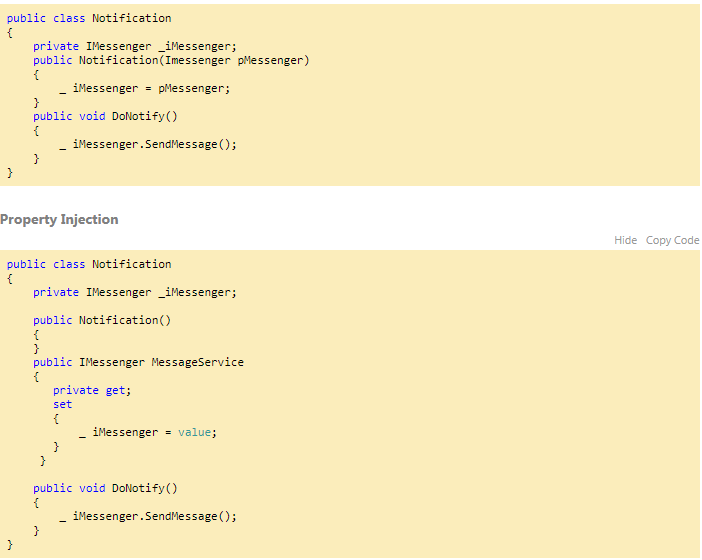SOLID Principle:-
SOLID is basically 5 principles, which will help to create a good software architecture. You can see that all design patterns are based on these principles. SOLID is basically an acronym of the following:
- S is single responsibility principle (SRP)
- O stands for open closed principle (OCP)
- L Liskov substitution principle (LSP)
- I interface segregation principle (ISP)
- D Dependency injection principle (DIP)
I believe that with pictures, with examples, an article will be more approachable and understandable.
1.1 Single responsibility principle (SRP)
- A class should take one responsibility and there should be one reason to change that class.
- Now what does that mean? I want to share one picture to give a clear idea about this.
- Now see this tool is a combination of so many different tools like knife, nail cutter, screw driver, etc. So will you want to buy this tool? I don’t think so.
- Because there is a problem with this tool, if you want to add any other tool to it, then you need to change the base and that is not good.
- This is a bad architecture to introduce into any system.
- It will be better if nail cutter can only be used to cut the nail or knife can only be used to cut vegetables.
- Now I want to give one C# example on this principle:
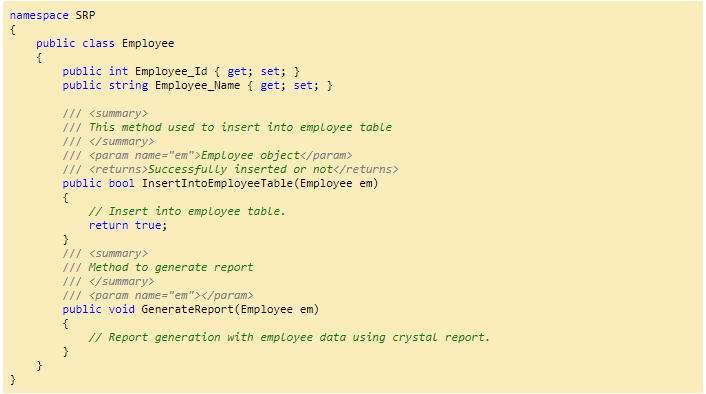
- ‘
Employee’ class is taking 2 responsibilities, one is to take responsibility of employee database operation and another one is to generate employee report. Employeeclass should not take the report generation responsibility because suppose some days after your customer asked you to give a facility to generate the report in Excel or any other reporting format, then this class will need to be changed and that is not good.- So according to SRP, one class should take one responsibility so we should write one different class for report generation, so that any change in report generation should not affect the ‘
Employee’ class.

2.2 Open closed principle (OCP)
Now take the same ‘ReportGeneration’ class as an example of this principle. Can you guess what is the problem with the below class!!
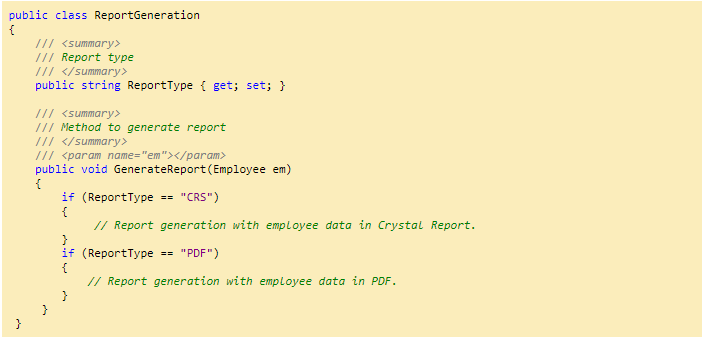
Brilliant!! Yes you are right, too much ‘If’ clauses are there and if we want to introduce another new report type like ‘
Excel’, then you need to write another ‘if’. This class should be open for extension but closed for modification. But how to do that!!
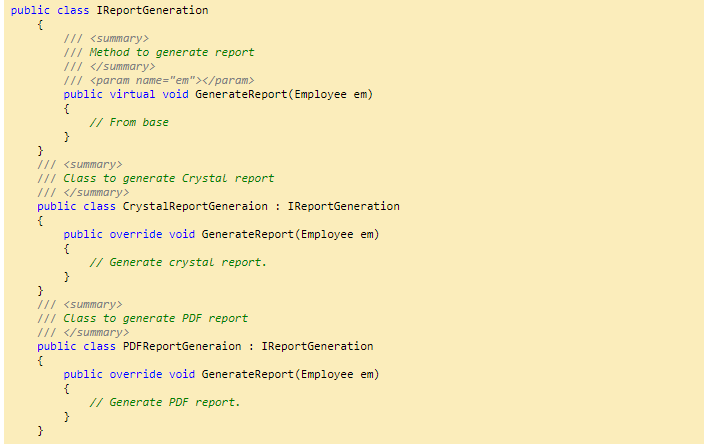
So if you want to introduce a new report type, then just inherit fromIReportGeneration. SoIReportGenerationis open for extension but closed for modification.
2.3 Liskov substitution principle (LSP)
- This principle is simple but very important to understand.
- Child class should not break parent class’s type definition and behavior.
- Now what is the meaning of this!! Ok let me take the same
employeeexample to make you understand this principle. - Check the below picture.
Employeeis a parent class andCasualandContractual employeeare the child classes, inhering fromemployeeclass.

Now see the below code:
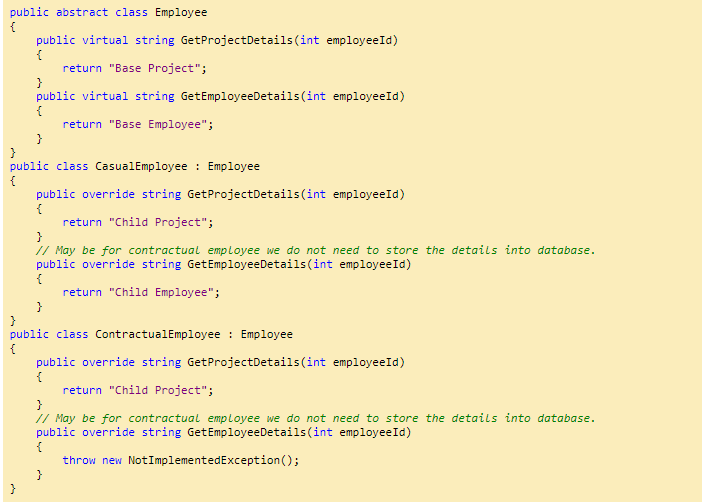
Up to this is fine right? Now, check the below code and it will violate the LSP principle.
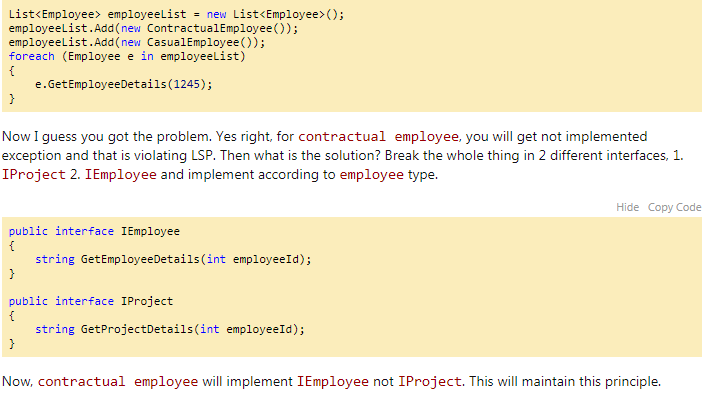
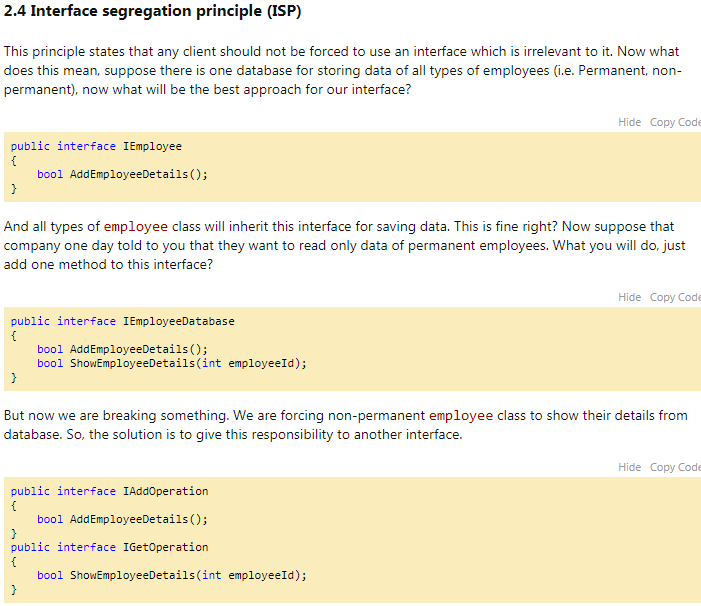
And non-permanentemployeewill implement onlyIAddOperationand permanentemployeewill implement both the interface.
2.5Dependency inversion principle (DIP)
- This principle tells you not to write any tightly coupled code because that is a nightmare to maintain when the application is growing bigger and bigger.
- If a class depends on another class, then we need to change one class if something changes in that dependent class.
- We should always try to write loosely coupled class.Suppose there is one notification system after saving some details into database.
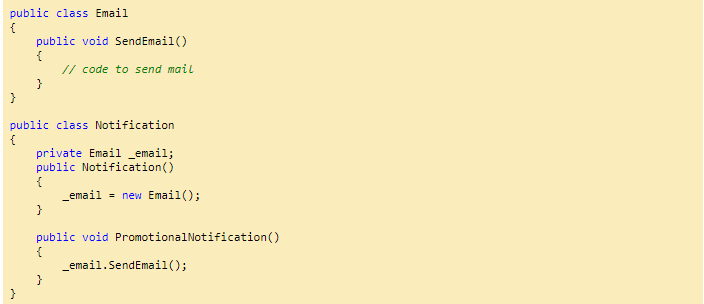
- Now
Notificationclass totally depends onEmailclass, because it only sends one type of notification. - If we want to introduce any other like SMS then? We need to change the notification system also. And this is called tightly coupled.
- What can we do to make it loosely coupled? Ok, check the following implementation.
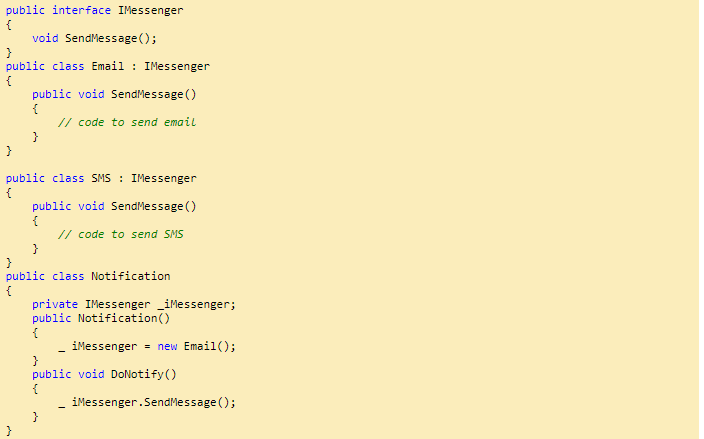
StillNotificationclass depends onEmailclass. Now, we can use dependency injection so that we can make it loosely coupled. There are 3 types to DI, Constructor injection, Property injection and method injection.
Constructor Injection
